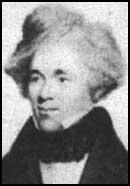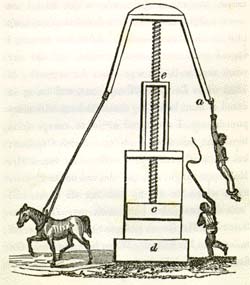Moses Roper faced extreme adversity during his time as a slave. He was brutally beaten and tortured on a consistent basis and demeaned to a point that would break the average person, however not Roper. Separated from his mother at the age of six, Roper became determined to reunite with his family while attempting to break free from the shackles of slavery. Roper was taken from his birthplace of North Carolina by a man named Mr. Sneed. Sneed had difficult selling Roper as he had descended from a white father and half white mother, so he traded Roper to Mr. Michael, a man who made a living by purchasing slaves in northern territory and bringing them further south to sell. Roper moved between different slave owners and traders until he was finally sold to a man named Mr. Hodge. At the time, the narrative was meant to show the American people of the horrors of slavery and to make an argument for the freedom of all people. Today, Roper’s narrative allows for a deeper understanding of the physical, emotional, and mental effects the institution of slavery had on those enslaved, allowing for more extensive studies of this stain on the history of the United States of America.
Hodge soon sold Roper to a slave master named Mr. Gooch who owned a plantation in Cashaw County, South Carolina. Mr. Gooch was a very cruel slave master who immediately began to beat Roper when he was unable to complete the unreasonable tasks that were bestowed upon him. While with Mr. Gooch, Roper determined that he was around the age of thirteen. It was at this age, after being threatened with floggings for an uncontrollable mistake, Roper made his first of many attempts to escape. Escaping from slavery was highly dangerous and could result in the severe injury and death of a slave. In his journal, Milton Polsky explains, “Running away was considered an unpardonable sin by the master class”(1). This knowledge of how masters dealt with runaway slaves was no secret to those enslaved, as Roper explains “When the slave runs away, the master always adopts a more rigorous system of flogging; this was the case in the present instance”(2). Not only did the slaves see what would happen upon being caught and returned, many experienced it. Yet Roper continued to try and try again. This speaks volumes to conditions under slavery. Roper describes his mind and spirit by writing, “Here again words are insufficient to describe the misery which both body and mind whilst under this treatment, and which was most dreadfully increased by the sympathy which I felt for my poor degraded fellow sufferer”(3).
This constant pain and suffering did not make Roper any less determined to achieve his ultimate goal of freedom. Unfortunately, Gooch recognized this vigor and determination of Roper and proceeded to break him down as much as possible. In her academic journal, “Revising Torture: Moses Roper and the Visual Rhetoric of the Slave’s Body in the Transatlantic Abolition Movement” Martha J. Cutter Writes, “Torture endeavors to dehumanize and render powerless its subjects; it also intends to shred human dignity and condense a person to a body in pain…”(4). During his second attempt at freedom, Roper was captured and imprisoned after he could no longer continue due to extreme hunger, prompting him to beg for food from a nearby house. Roper describes his treatment upon his return to Mr. Gooch;
In the morning after his breakfast he came to me, and without giving me any breakfast, tied me to a large heavy barrow, which is usually drawn by a horse, and made me drag it to the cotton field for the horse to use in the field. Thus, the reader will see, that it was of no possible use to my master to make me drag it to the field, and not through it; his cruelty went so far as actually to make me the slave of his horse, and thus to degrade me (5).
Roper went on to escape one final time before being sold. He made his way back to where he was originally taken in North Carolina by deceiving white men of his freedom. Here, Moses found his family, but remained near them for too long and was captured and returned back to Mr. Gooch. Upon his return, Moses was sold multiple times and found himself in the custody of Mr. Register. Register was a drinking man, which enabled the final escape of Roper. This escape lasted for almost sixteen months. During this time, Roper was traveled through much of New York but was unable to find a safe haven where he could work and live without the fear of being returned to the south.
Moses Roper eventually heard of a ship sailing to England from New York, and on November 29th, 1835, he reached Liverpool. He writes, “My feelings when I first touched the shores of Britain were indescribable, and can only be properly understood by those who have escaped from the cruel bondage of slavery”(6). Roper persevered from some of the most difficult and trying times imaginable, and he recorded his entire experience in an attempt to expose America to the cruel reality of slavery. Even by the end of his journey, Moses Roper highly regards the free institutions of the United States and hopes that “may America soon be indeed the land of the free”(7).
(1) Polsky, Milton. “The American Slave Narrative: Dramatic Resource Material for the Classroom.”The Journal of Negro Education 45, no. 2 (1976): 169. http://www.jstor.org/stable/pdf/2967085.pdf
(2) Roper, Moses, “A Narratives of the Adventures and Escape of Moses Roper From American Slavery: (Philadelphia: Merrihew & Gunn, 1838), 15.
(3) Roper, Moses, “A Narratives of the Adventures and Escape of Moses Roper From American Slavery: (Philadelphia: Merrihew & Gunn, 1838), 20.
(4) Cutter, Martha J. “Revising Torture: Moses Roper and the Visual Rhetoric of the Slave’s Body in the Transatlantic Abolition Movement.” ESQ: A Journal Of The American Renaissance no. 3: 371 (2014). Project MUSE, EBSCOhost (accessed November 13, 2016).
(5) Roper, Moses, “A Narratives of the Adventures and Escape of Moses Roper From American Slavery: (Philadelphia: Merrihew & Gunn, 1838), 19.
(6) Roper, Moses, “A Narratives of the Adventures and Escape of Moses Roper From American Slavery: (Philadelphia: Merrihew & Gunn, 1838), 84.
(7) Roper, Moses, “A Narratives of the Adventures and Escape of Moses Roper From American Slavery: (Philadelphia: Merrihew & Gunn, 1838), 89.


